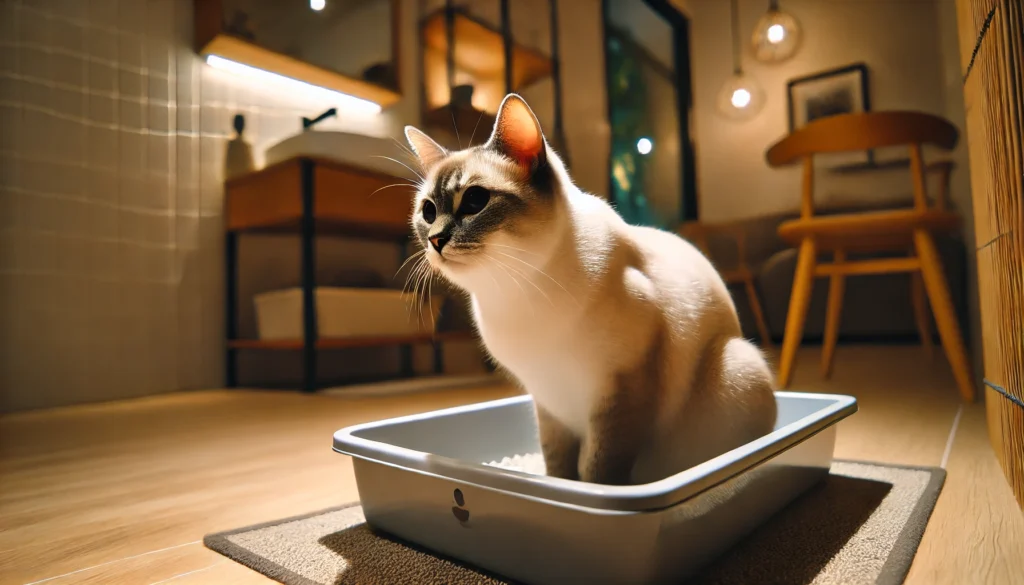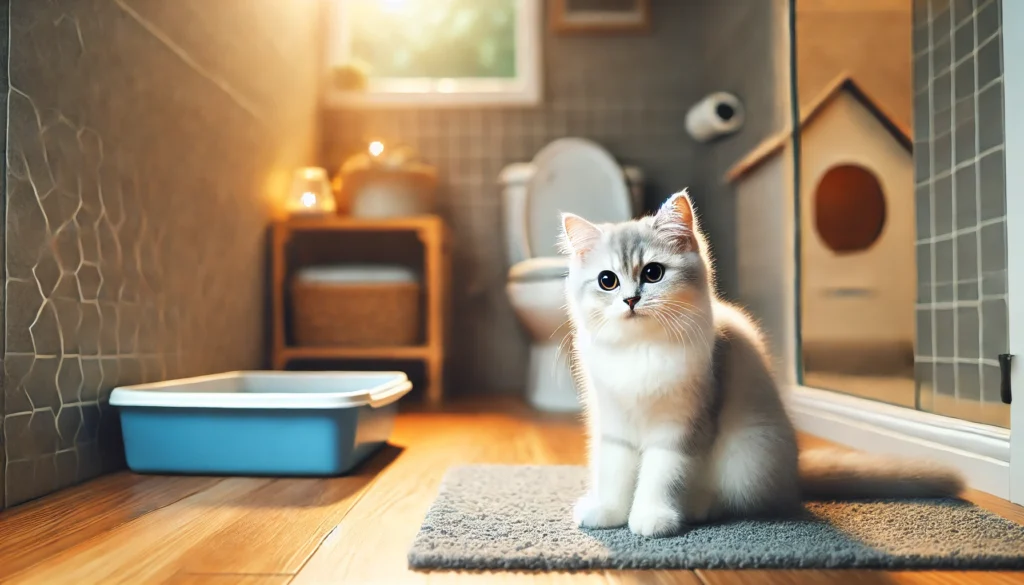Training a cat to use the litter box may seem like a challenge initially, but with the right tips, you can turn this task into a smooth and efficient process. As a veterinarian specializing in feline behavior, I understand the concerns many cat owners face when trying to ensure their pet uses the litter box appropriately.
Fortunately, with a little patience and some proven strategies, you can help your cat adopt this essential habit for their hygiene and health.
Choosing the Ideal Litter Box
Firstly, it is essential to choose the ideal litter box for your cat. Cats are very demanding animals when it comes to where they do their business. The box should be large enough for him to move around and dig in comfortably. Additionally, consider crates with lower edges for kittens or senior cats, making them easier to access.
Type of Sand
The choice of sand is also crucial. There are several options on the market, from clay sand to crystal and biodegradable sand. It's important to observe your cat's preference, as some may be more sensitive to textures and smells. Unscented sand with a good absorption capacity is generally well accepted.
Sandbox Location
The location of the litter box can make a big difference. It should be a quiet place, easily accessible and away from the area where the cat eats and sleeps. Avoid areas with a lot of traffic or noise, as this can scare or stress the cat, discouraging it from using the box.
Regular Maintenance
Regular litter box maintenance is one of the most important aspects. Cats are extremely hygienic animals and may refuse to use a dirty box. Clean the box at least once a day, removing residue and changing the sand weekly. This care not only keeps the litter box attractive to your cat, but also helps prevent unpleasant odors in your home.
Incentives and Positive Reinforcements
Using incentives and positive reinforcement can speed up the learning process. Whenever your cat uses the litter box correctly, offer a reward, such as a treat or affection. This creates a positive association with litter box use, making him more likely to repeat the behavior.

Monitoring and Adaptations
Observe your cat's behavior and be prepared to make adaptations if necessary. If you notice that he is avoiding the litter box, try to identify the cause. It may be that the box needs to be moved to a more suitable location or that the sand used is not pleasing. Flexibility and attentiveness are essential for success.
Puppy Training
Training puppies can be a little more challenging due to their energy and curiosity. However, start by placing them in the litter box right after meals and after they wake up from a nap. These are times when they are most likely to need to relieve themselves. With time and consistency, they will begin to associate the litter box with these moments.
Tips for Adult Cats
Adult cats who have never been litter box trained or who have behavioral problems may need a slightly different approach. Start by confining the cat to a smaller space with the litter box until he starts using it regularly. Gradually increase the available space as it becomes more reliable.
Common Problems and Solutions
Some common problems include the cat urinating outside the box or covering its feces inadequately. These behaviors can be a sign of stress, health problems or dissatisfaction with the litter box or litter used. Always consult a veterinarian to rule out medical problems before assuming the behavior is purely behavioral.
Consult an Expert
If, despite all your attempts, your cat continues to have problems using the litter box, do not hesitate to consult a feline behavior specialist. They can offer valuable insights and strategies tailored to your specific case.

Proper Maintenance and Cleaning
Regular litter box maintenance is one of the most important aspects. Cats are extremely hygienic animals and may refuse to use a dirty box. Clean the box at least once a day, removing residue and changing the sand weekly. This care not only keeps the litter box attractive to your cat, but also helps prevent unpleasant odors in your home. Use cat-safe disinfectants for deeper cleaning when necessary.
Adaptation and Patience
Just like humans, cats also need time to adapt to new changes. Be patient during the training process. If your cat makes a mistake and doesn't use the litter box, don't scold him harshly. Instead, gently redirect him to the crate and continue reinforcing the positive behavior when he uses it correctly.
Products That Can Help
There are several products on the market that can make litter box training and maintenance easier. Entrance mats can help capture loose litter from your cat's paws, keeping the area around the box cleaner. Additionally, attractive sprays can be used to encourage the cat to use the litter box, especially useful during the early stages of training.
Identifying Health Problems
Sometimes litter box aversion can be a sign of health problems. Cats that are experiencing pain when urinating or defecating may associate this pain with the litter box and avoid it. If you notice your cat avoiding the litter box, pay your veterinarian a visit to rule out medical conditions like urinary tract infections or digestive problems.
Conclusion
Training your cat to use the litter box may require patience and persistence, but it is a worthwhile investment to ensure your pet's health and well-being. Remember to always observe your cat's behavior and make adjustments as necessary. With the tips and strategies covered in this article, you will be well equipped to help your cat develop solid toilet habits. Ultimately, good communication and understanding of your cat are essential for a harmonious, clean home.
Be flexible, patient and persistent. Each cat is unique, and what works for one may not work for another. Therefore, adjust techniques as necessary and continue to provide a safe and loving environment for your feline. With time and effort, your cat will become a master at using the litter box, and you will enjoy a cleaner home and a happier pet.
